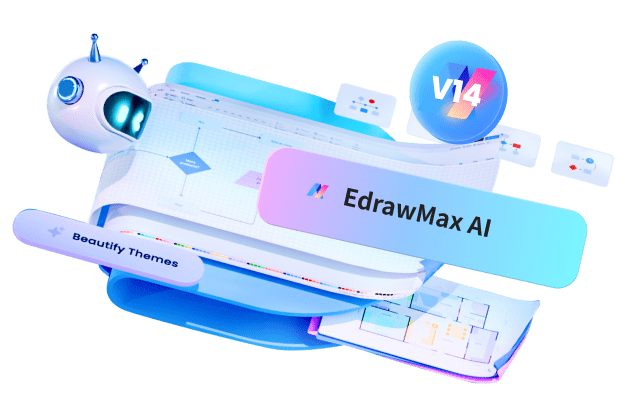Risk management is an integral aspect of any organization's operations. It involves identifying potential risks, assessing their impact and likelihood, and implementing strategies to minimize or eliminate them. A crucial part of risk management is the development of a comprehensive risk treatment plan.
Risk treatment refers to the process of selecting and implementing measures to mitigate or respond to identified risks. Once risks have been identified and analyzed, an organization must decide on an appropriate course of action to address each risk. This can include accepting, transferring, avoiding, or reducing the risks.
Risk responses usually involve a combination of these approaches, depending on the nature and severity of the risks involved.
In this article
Part 1. Building a Risk Management Strategy
It is crucial for organizations to develop a strategy for risk management. Developing a risk management strategy requires a systematic approach.
1. Identify and analyze risks: The first step is to identify potential risks that could impact the organization.
2. Prioritize risks: Once identified, risks need to be prioritized based on their potential impact on the organization's objectives.
3. Develop risk management objectives: Organizations need to establish clear objectives for managing risks.
4. Select risk treatment approaches: Based on the analysis and prioritization of risks, organizations must determine the most appropriate treatment approaches for each risk.
5. Implement risk treatment measures: After selecting the risk treatment approaches, organizations need to implement the necessary measures to address the identified risks.
6. Monitor and review: Risk management is an ongoing process, and it is essential to monitor the effectiveness of the implemented measures continuously.
Developing a risk management and risk treatment strategy is a collaborative effort that involves multiple stakeholders within an organization. While the ultimate responsibility for risk management lies with top-level management, it is crucial to involve individuals from various departments and levels of the organization.

Part 2. Types of Risk Management Strategy
There are several types of risk management strategies. Organizations should choose a strategy that would work best for them.
1. Risk Acceptance: This approach involves acknowledging risks without taking any specific action to address them. Organizations may choose to accept risks when the potential impact is relatively low or when the cost of mitigation outweighs the benefits.
2. Risk Transference: This approach involves transferring the risk to another party, typically through insurance or contractual agreements. By shifting the responsibility for managing certain risks to external entities, organizations can mitigate financial and operational impacts.
3. Risk Avoidance: This approach entails eliminating or avoiding activities or situations that pose significant risks to an organization. While this may limit potential growth opportunities, it can be an appropriate strategy when risks are deemed unacceptable or when alternative options are available.
4. Risk Reduction: This approach focuses on implementing measures to control and minimize risks. This may include implementing safety protocols, enhancing security measures, or adopting technological solutions to decrease the likelihood or impact of risks.
Part 3. Steps in Developing a Risk Treatment Plan
Developing a risk treatment plan involves several crucial steps. These steps ensure its effectiveness.
1. Treatment: This step involves choosing the most appropriate approach for the treatment of identified risk based on the organization's risk management objectives and available resources.
2. Document: It is crucial to document the risk treatment process plancomprehensively. This includes outlining the objectives, detailing the chosen risk treatment approaches, and specifying the responsibilities of various stakeholders involved in the plan's implementation.
3. Accountability/Ownership: Assigning clear accountability and ownership of the plan for treating risks is essential to ensure its successful implementation. This involves designating individuals or departments responsible for carrying out specific actions outlined in the plan.
4. Timeline: Establishing a timeline for the execution of risk treatment measures is vital for monitoring progress and ensuring timely implementation. It helps create a sense of urgency and promotes accountability among the involved stakeholders.
Part 4. Use Edrawmax to Create a Risk Treatment Chart
Wondershare EdrawMax is an ideal choice for creating a risk treatment chart due to its powerful yet easy-to-use tools and features. It offers an extensive collection of templates. Here are the steps to create a risk treatment chart using the tool:
Step 1: You must first log in with your credentials before you can begin using a Wondershare EdrawMax template to create a risk treatment chart.

Step 2: After logging in, open a new document by clicking the plus sign to the right of the New button or by using the shortcut key "Ctrl+N."

Step 3: Locate a risk treatment chart template by going to the "Templates" section.

Step 4: Personalize the chart to suit your needs. With EdrawMax, customization options are virtually limitless.

Step 5: Now input the required data into the chart. Include in your chart all the informative data that you feel is necessary.

Step 6: The chart is now ready to be saved to your computer. In order to do this, choose the file format you want to save it in by clicking "Save" under the "File" tab.

Step 7: You have the option to export your chart in a variety of formats. Click "Export" under the "File" tab and select the appropriate format to export the file.

Conclusion
Developing a comprehensive risk treatment and response plan is crucial for organizations to effectively manage potential risks. By considering the various risk management approaches and following a systematic process, organizations can proactively address risks, minimize potential impacts, and safeguard their operations.




